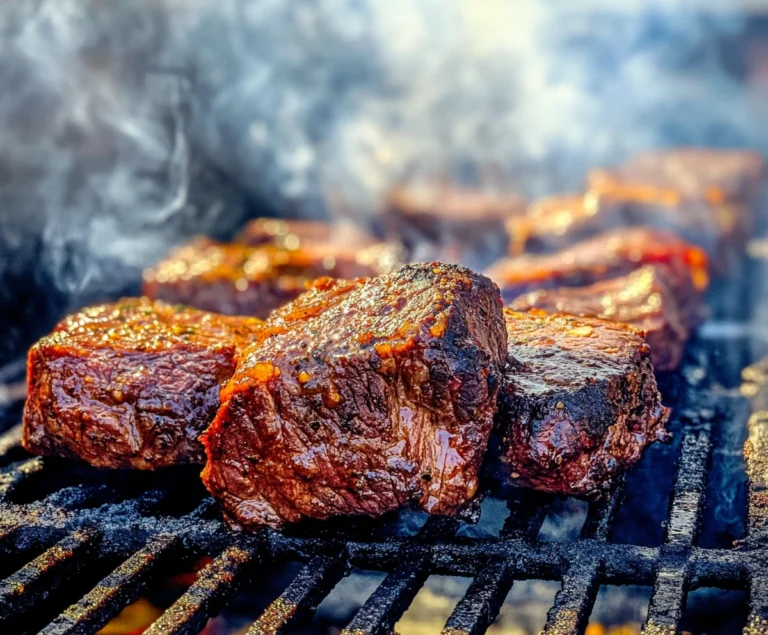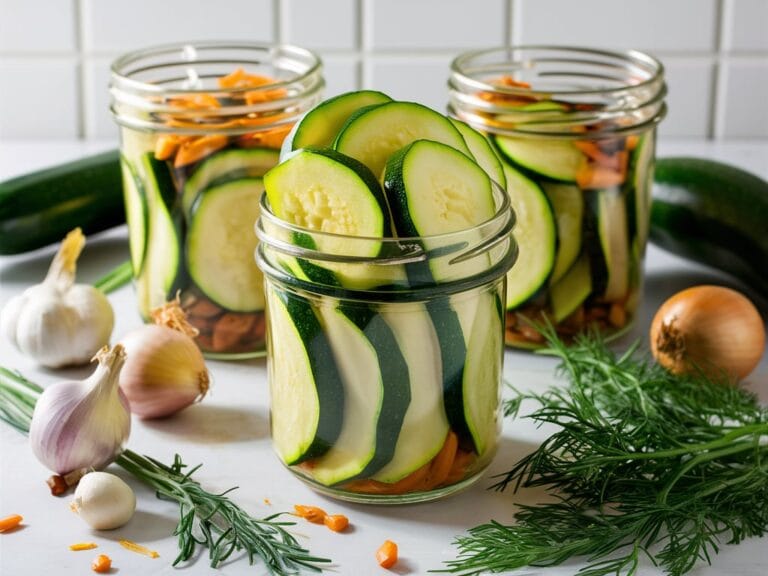How to Thicken Parmesan Cream Sauce: Comprehensive Guide
Parmesan cream sauce is an indulgent, versatile sauce that adds richness and flavor to a variety of dishes, from pasta and chicken to vegetables and even seafood. While the sauce itself is simple to make, achieving the right consistency can be tricky. You want a sauce that’s smooth, rich, and clings beautifully to your dish without being too runny or too thick.
In this comprehensive guide, we will cover everything you need to know about how to thicken parmesan cream sauce, including various methods, ingredients that influence thickness, and how to fix common sauce-thickening mistakes. Additionally, we’ll explore the science behind each thickening technique, FAQs about cream sauce, and advanced tips for elevating your culinary skills.
Why Thickening Parmesan Cream Sauce Matters
A perfectly thickened sauce doesn’t just look better on the plate—it tastes better too. Here’s why the consistency of your sauce is so important:
1. Texture and Mouthfeel
A well-thickened sauce provides a luxurious texture that enhances the dining experience. When your sauce clings to the pasta, meat, or vegetables, every bite is coated with rich, savory goodness. A thin, runny sauce, on the other hand, may pool at the bottom of the plate, failing to deliver that mouth-coating effect.
2. Flavor Concentration
Reducing and thickening a sauce intensifies its flavors. By allowing some of the moisture to evaporate, you concentrate the flavors of the ingredients, making each bite more flavorful. This is especially important in a sauce like parmesan cream sauce, where the flavor of parmesan cheese is key.
3. Aesthetic Appeal
We eat with our eyes first. A thick, velvety sauce looks far more appetizing than a watery one. It also elevates the overall presentation of the dish, making it look more professional and polished.
For more on the role of texture and flavor in sauces, check out this detailed article on what is parmesan cream sauce made of.
Essential Ingredients in Parmesan Cream Sauce
Before diving into the various thickening methods, it’s important to understand the role that each ingredient plays in the sauce’s consistency. Here’s a breakdown of the key ingredients in parmesan cream sauce and how they contribute to its thickness:
1. Parmesan Cheese
Parmesan cheese is naturally high in protein and fat, both of which help to thicken sauces. When you melt parmesan into a sauce, it not only adds flavor but also contributes to the sauce’s thickness. However, too much cheese can result in a grainy texture, so balance is key.
2. Heavy Cream
Heavy cream is the base of parmesan cream sauce, and its fat content plays a major role in determining the final texture. The higher the fat content, the thicker the sauce will be. Heavy cream is preferable to lighter creams or milk, as it thickens more easily and provides a richer flavor.
3. Butter
Butter adds richness and smoothness to the sauce. It also helps emulsify the sauce, creating a silky texture. When combined with flour to make a roux (a thickening agent), butter can also help increase the thickness of the sauce.
4. Garlic and Aromatics
While garlic doesn’t directly impact the thickness of the sauce, it enhances the flavor. Aromatics like garlic, onions, or shallots can be sautéed in butter to add depth before you begin thickening the sauce.
5. Flour or Cornstarch (Optional)
Flour and cornstarch are common thickeners used in cream sauces. While these ingredients don’t usually appear in traditional parmesan cream sauces, they can be added when you need an extra boost in thickness.
For more inspiration on the use of these ingredients, check out how to thicken parmesan cream sauce.
10 Techniques to Thicken Parmesan Cream Sauce
Here are the top methods to thicken parmesan cream sauce, ranging from traditional techniques to creative alternatives for non-dairy or low-fat versions.
1. Reducing the Sauce
Reduction is one of the simplest and most effective methods to thicken parmesan cream sauce. By simmering the sauce, you allow the water content to evaporate, naturally concentrating the sauce and intensifying its flavor.
How to Reduce Parmesan Cream Sauce:
- Step 1: After adding your heavy cream and parmesan, bring the sauce to a simmer over low to medium heat.
- Step 2: Stir the sauce frequently to prevent sticking or burning.
- Step 3: Allow the sauce to simmer until it reduces by about one-third. This should take 10-15 minutes depending on the quantity of sauce you’re making.
Pro Tips:
- Keep the heat low. High heat can cause the sauce to separate, leading to a greasy texture.
- Stirring is key. This prevents the sauce from sticking to the bottom of the pan or burning.
Reduction doesn’t require any additional ingredients, making it a great choice if you want to preserve the natural flavor of your sauce.
2. Using a Roux (Butter and Flour)
A roux is a traditional French technique for thickening sauces. It is made by cooking equal parts butter and flour, which creates a paste that thickens liquids when added. Roux works well in parmesan cream sauce because it provides a smooth, rich consistency.
How to Make a Roux:
- Step 1: Melt 2 tablespoons of butter in a pan over medium heat.
- Step 2: Add 2 tablespoons of flour and stir continuously. Cook for 2-3 minutes until the flour is lightly golden and smells nutty.
- Step 3: Slowly whisk the roux into your simmering sauce. Continue stirring until the sauce thickens.
Pro Tips:
- Make sure to cook the flour long enough to remove its raw taste.
- You can make a roux in advance and store it in the fridge or freezer for future use.
3. Cornstarch Slurry
A cornstarch slurry is a quick and easy way to thicken sauces without altering the flavor. It’s particularly useful if your sauce is too thin toward the end of the cooking process.
How to Make a Cornstarch Slurry:
- Step 1: Mix 1 tablespoon of cornstarch with 1 tablespoon of cold water in a small bowl.
- Step 2: Whisk the slurry into your simmering sauce. The sauce should thicken within 1-2 minutes.
Pro Tips:
- Add the cornstarch slowly, as adding too much can result in a gummy texture.
- Always mix cornstarch with cold water before adding it to the sauce. Adding it directly to the hot sauce can cause clumping.
4. Egg Yolks as a Thickener
Egg yolks are an excellent way to thicken cream-based sauces while adding richness. They work particularly well in sauces where you want to maintain a silky texture without adding starch or flour.
How to Use Egg Yolks to Thicken:
- Step 1: Beat 2 egg yolks in a small bowl.
- Step 2: Slowly whisk in 1/4 cup of your hot sauce to temper the yolks (this prevents them from scrambling).
- Step 3: Gradually add the tempered egg mixture back into the sauce, stirring constantly until the sauce thickens.
Pro Tips:
- Do not let the sauce boil after adding egg yolks, as this can cause the yolks to curdle.
- Tempering the yolks is crucial to prevent them from cooking too quickly and forming lumps.
Egg yolks give your sauce a rich, custard-like texture without the need for flour or starch.
5. Adding More Parmesan Cheese
Since parmesan cheese is one of the primary ingredients in the sauce, adding more of it is a simple and effective way to thicken your sauce. The cheese’s protein content helps bind the sauce, making it thicker and more flavorful.
How to Add Parmesan Cheese:
- Step 1: Grate an additional 1/4 to 1/2 cup of fresh parmesan cheese.
- Step 2: Stir the cheese into your simmering sauce until fully melted and blended.
Pro Tips:
- Use fresh parmesan for the best results. Pre-grated parmesan can contain anti-caking agents that may prevent the cheese from melting smoothly.
- Be careful not to add too much cheese, as it can make the sauce too salty or grainy.
6. Adding Cream Cheese or Mascarpone
If you want to add both thickness and richness to your sauce, cream cheese or mascarpone is an excellent option. Both cheeses melt smoothly into sauces and add a luscious, creamy texture.
How to Add Cream Cheese:
- Step 1: Soften 2-3 tablespoons of cream cheese at room temperature.
- Step 2: Stir the cream cheese into the hot sauce, whisking until it melts and blends fully.
Pro Tips:
- Make sure the cream cheese is fully softened before adding it to the sauce to ensure it melts evenly.
- You can also use mascarpone as an alternative, which adds a slightly sweeter and creamier texture.
7. Xanthan Gum
For a modern, low-carb option, xanthan gum is a great thickening agent. Xanthan gum is a gluten-free thickener that requires only a small amount to significantly thicken liquids.
How to Use Xanthan Gum:
- Step 1: Add a pinch of xanthan gum (about 1/8 teaspoon) to your sauce while it’s still hot.
- Step 2: Whisk the xanthan gum into the sauce, which should thicken almost immediately.
Pro Tips:
- Be careful with the amount you use, as xanthan gum is very potent. A little goes a long way.
- Xanthan gum is flavorless, so it won’t alter the taste of your sauce, making it ideal for those looking to avoid altering the flavor.
8. Gelatin
Another non-traditional thickener is gelatin, which is commonly used in culinary applications where you need a thick yet delicate texture. Gelatin adds body to a sauce without making it overly rich or starchy.
How to Use Gelatin:
- Step 1: Dissolve 1/2 teaspoon of unflavored gelatin in 2 tablespoons of cold water.
- Step 2: Once the gelatin blooms (absorbs the water and becomes thick), whisk it into your hot sauce until it dissolves completely.
Pro Tips:
- Be mindful that gelatin sets when cold, so your sauce may become thicker as it cools.
- Gelatin is ideal for sauces served warm but not piping hot, as excessive heat can break down the gelatin’s thickening properties.
9. Blending Ingredients
If you’ve added vegetables or aromatics to your sauce, blending them into the sauce can help thicken it without adding any extra ingredients.
How to Use Blending:
- Step 1: Remove any chunks of garlic, onion, or other aromatics from the sauce.
- Step 2: Use an immersion blender to blend the ingredients until smooth.
Pro Tips:
- Blending is an excellent technique for those who want to avoid added thickeners like flour or cornstarch.
- Be sure to remove any tough bits or skins before blending to achieve a smooth texture.
10. Arrowroot Powder
Similar to cornstarch, arrowroot powder is a gluten-free thickener that works well in sauces. It thickens at lower temperatures than cornstarch and creates a glossy finish.
How to Use Arrowroot Powder:
- Step 1: Mix 1 tablespoon of arrowroot powder with 1 tablespoon of cold water to form a slurry.
- Step 2: Whisk the slurry into the sauce and cook until thickened.
Pro Tips:
- Arrowroot powder is more heat-sensitive than cornstarch, so be sure to add it towards the end of the cooking process.
- Avoid combining arrowroot with dairy, as it can create a slimy texture.
Troubleshooting Sauce Thickening Issues
No matter which method you use, sometimes things can go wrong. Here are some common issues and how to troubleshoot them:
1. Sauce Too Thick
If your sauce ends up too thick, don’t worry! It’s easy to fix.
- Solution: Add a splash of heavy cream, milk, or even chicken broth to thin out the sauce. Stir continuously until the sauce reaches the desired consistency.
2. Sauce Too Thin
If your sauce is still too thin after trying one of the thickening methods, here’s what to do:
- Solution: Try adding more parmesan cheese, roux, or cornstarch slurry to the sauce. Continue cooking and stirring until the sauce thickens.
3. Lumpy Sauce
Lumps in the sauce are often caused by improperly mixing thickeners like flour or cornstarch. To avoid this, always whisk thickeners into the sauce gradually and continuously.
- Solution: If lumps have already formed, you can strain the sauce through a fine-mesh sieve or use an immersion blender to smooth it out.
4. Sauce Breaking (Separation)
Sometimes cream sauces separate or “break,” especially if they’re overheated.
- Solution: To fix a broken sauce, remove it from the heat and whisk in a splash of heavy cream or a few drops of cold water until it comes back together.
For more tips on fixing broken sauces, check out this guide on what happens when you add lemon juice to cream.
FAQs About Thickening Parmesan Cream Sauce
Can I Use Non-Dairy Alternatives to Thicken Parmesan Cream Sauce?
Yes, you can make a dairy-free version of parmesan cream sauce by using non-dairy alternatives like coconut milk or almond milk. However, non-dairy creams tend to be thinner, so you may need to use additional thickeners like cornstarch or arrowroot powder to achieve the right consistency.
How Long Does It Take to Thicken a Cream Sauce?
The time depends on the method you choose. Reduction can take 10-15 minutes, while using a roux, cornstarch slurry, or egg yolks can thicken a sauce in just a few minutes. If using gelatin or xanthan gum, the sauce thickens almost immediately.
Can You Reheat Thickened Parmesan Cream Sauce?
Yes, but reheating cream-based sauces can be tricky. To reheat a thickened parmesan cream sauce:
- Step 1: Warm it slowly over low heat.
- Step 2: Add a splash of milk or cream to prevent the sauce from becoming too thick or separating.
Conclusion
Thickening parmesan cream sauce is an essential skill that every home cook should master. Whether you prefer the simplicity of reducing the sauce or the richness of using egg yolks or cream cheese, there are multiple ways to achieve the perfect consistency. By understanding the role each ingredient plays and choosing the right thickening method, you can make a delicious, restaurant-quality parmesan cream sauce every time.
For further reading on elevating your sauces, check out other articles like how to thicken parmesan cream sauce. Whether you’re a beginner or an experienced chef, these tips will help you create flawless, thickened sauces that take your dishes to the next level.







